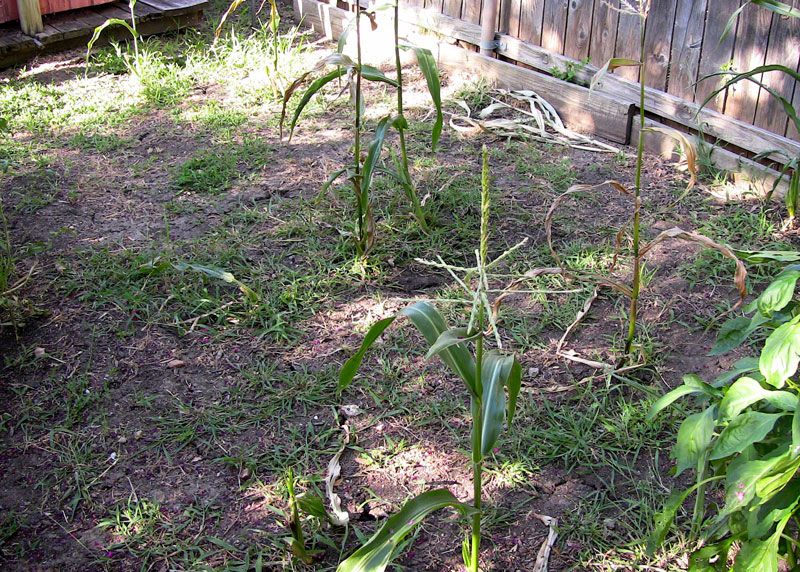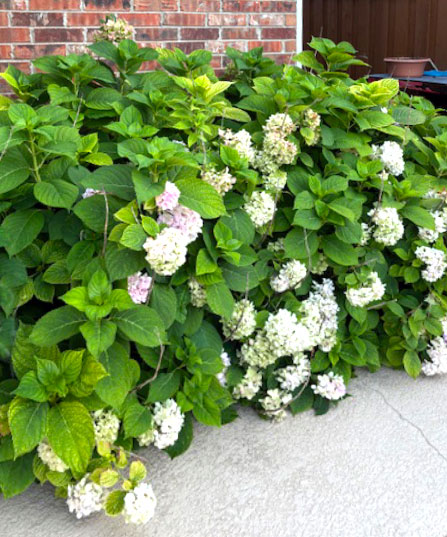Q&A – Ask Neil: July 10, 2025
(Please read these instructions carefully.)
Before you post your question, please look at recent issues to see if someone else has already asked it. You might find your answer there.
How to submit your question…
(Note: You may need to allow a pop-up window to come up in order to get the link for sending your photo(s). If you have already submitted your question and didn’t see the pop-up window, please click here.)
• Click the link provided below to post your question. After you submit your question, a new window will pop up giving you the address to which you can e-mail a SHARP, HIGH-RESOLUTION PHOTO to accompany your question. Please DO NOT SEND THUMBNAIL PHOTOS in case I need to zoom in to see things.
• Click here to post your question.
• Please ONLY POST YOUR QUESTION ONE TIME. We can only accept a set number of questions each week, and when we get duplicates it costs other people their chances.
• One question per reader, please.
• Please use this only for posting questions – not for standard emails.
• Watch for your answer in the following week’s e-gardens.
• I choose those of greatest general interest. For example, plant IDs seldom make the cut.
• I must have your first name or initials.
• I must have your city or county. (Texas is a very large state.)
Important favor: I’ve been covered up so far this year with questions about live oaks losing chunks of bark. Rather than continuing to answer the same questions weekly, I’d ask that you look back to previous issues. You’ll find several replies that I’ve posted. Thanks!
QUESTION 1
WHAT HAS RUINED MY TOMATO CROP? CAN I SAVE FOR FALL?
Question: These are Celebrity and Sakura tomatoes, lush at first, but then lower leaves yellow, then brown. I’ve looked with magnification and the white paper and I have not seen spider mites. I have used organic controls (insecticidal soap and copper) for spider mites and early blight, but the plants still look this bad. Only two small fruit. Can I save these plants? What happened to them? Vicky S., Austin.
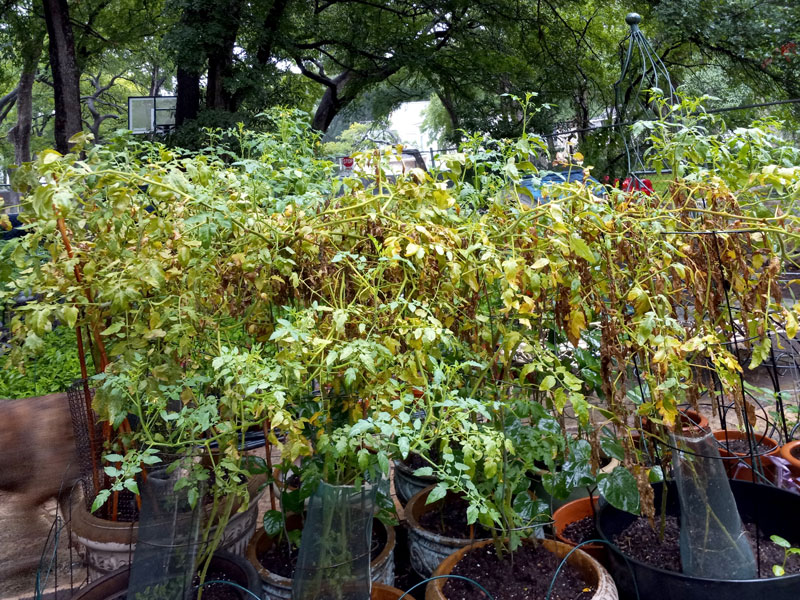
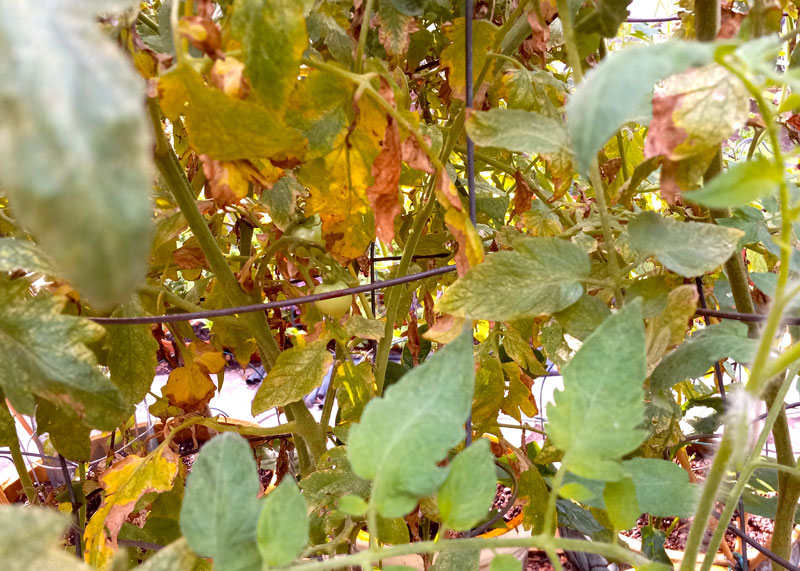
Images clickable for a larger view.
Answer: This is spider mite damage. The plants are also way too close together. They are crowding one another and robbing each other of light. These plants are beyond saving. New plants in Austin could be planted now for a fall crop, but you should only have 3 or 4 plants in this amount of space. The spider mites were there in large numbers. You must have been looking for something much larger. Before you discard these plants, you might take a yellowing sample to a Texas Certified Nursery Professional and ask them to show you how tiny spider mites are by using the white paper technique again. They could meet you on their parking lot so you wouldn’t be dragging the pests into the nursery. Giving the plants a lot more space between each other would also slow the spread of pests and diseases.
QUESTION 2
WHAT IS HAPPENING TO MY BRAZILIAN ROCK ROSE?
Question: What is happening to my Brazilian rock rose? My weed control company says it is “fungal,” and not due to their lawn treatment overspray. Paula L., Carrollton.
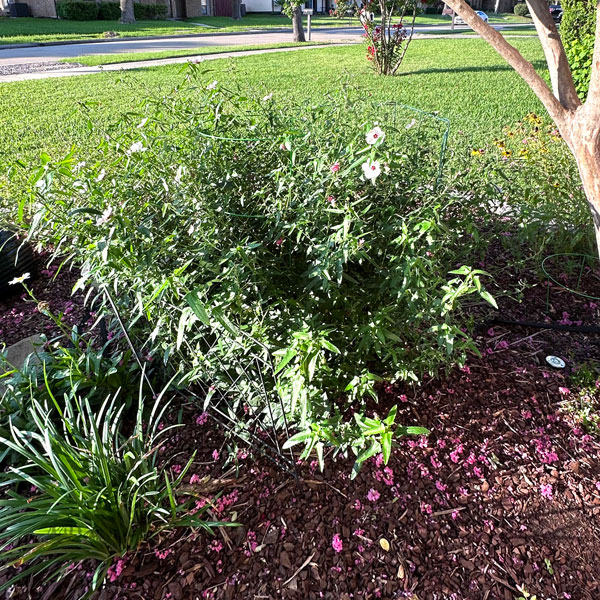
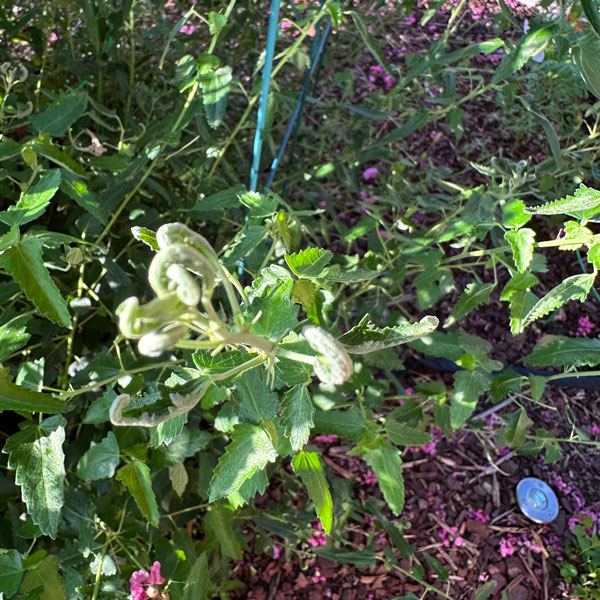
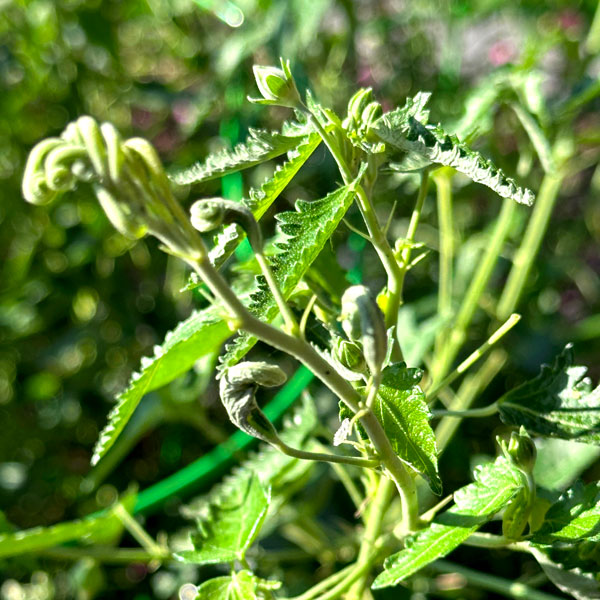
Images clickable for a larger view.
Answer: This is herbicide damage. Broadleafed weedkillers often contain hormonal type products (2,4-D is an example) that cause distorted growth of non-grassy tissues. Watch how broadleafed weeds react to the spray and you’ll see that it’s in the same way. That’s what I’m seeing in your photos. The good news is that it looks like the plant is outgrowing it. I always look for the most recent growth, and in this case it looks like the new growth is getting back to normal. In other words, this was just a “glancing blow.” But your company should be held accountable, if not for careless application, at least for not recognizing it.
QUESTION 3
IS MY GARDEN SOIL “TIRED?”
Question: Am I suffering from “tired soil?” This is my pathetic corn crop. I have planted sweet corn in this spot for more than 30 years. I used to get a full patch of sweet corn every year, but it has seriously declined in the past 3 years to almost nothing. Most of the seeds are not germinating. Each spring I rototill in bags of compost and manure and add some high-N fertilizer. I plant fresh seed as per directions. It’s the only sunny spot that I have. What else can I do? Steve R., Arlington.
Answer: I can only judge from the photo you sent, but it looks like this area is far from sunny. And it doesn’t look like the soil has had much prior preparation of any lasting effect. It looks like your organic matter has already played out completely. If you don’t get 8 hours of total and uninterrupted sunlight per day because the trees have grown larger over the years, I would suggest that it’s time to switch over to leafy and root vegetables. If you decide to stick with corn, add several inches of organic matter (well-rotted compost, processed manure, sphagnum peat moss, etc.) into the top 6-8 inches of soil. Rake the soil into ridges, then plant your seeds 3-4 inches apart in rows that are 18 inches apart. Keep it watered deeply as it sprouts and starts growing. Fertilize with the high-N product when it’s several inches tall and again after 4 weeks. All that said, I really keep thinking about the sunlight. Tree growth and subsequent shade can be a subtle thing that creeps into our garden spaces.
QUESTION 4
HOW CAN I KEEP MY HYDRANGEA A MORE MANAGEABLE SIZE?
Question: While I do enjoy the beautiful flowers, I would like to cut the plant back down to a more manageable size. I do break the dead stems at the end of its growing season. It’s 20 years old. Donna C., Plano.
Answer: I hope I’m understanding your question/answering the right question. Prune it immediately after it finishes blooming. Use hand shears and loppers to cut one branch at a time. Remove any dead or bare canes. Trim healthy stems back by a few inches. Avoid a formally sheared rounded or square final product. Get this trimming done as soon as possible after the blooming has finished so it can get about setting buds for next year’s blooms.
QUESTION 5
WHERE DO I FIND 100 PERCENT GLYPHOSATE?
Question: I’ve heard you recommend 100 percent glyphosate and that we should talk to independent retail garden center personnel. I have struck out completely. No one carries 100 percent glyphosate. Help? Tom D., Denton.
Answer: That’s a slight misquote (but understandable). What you would have heard me recommend would have been that you buy and use a “straight glyphosate product with no other active ingredient in it.” Originally you could buy a product that was 42 percent glyphosate with 58 percent inert ingredients. However, now you’ll have to find another brand to find that same “straight glyphosate” product. My intent in using the word “straight” is to keep you away from the products that contain other herbicides. Some of them go into the soil and persist for months and even longer. Glyphosates are contact only. They become inactive when they come into contact with the soil.
Have your independent retail garden center, feed store, or hardware store show you all products containing glyphosate. Tell them you want one “where glyphosate is the only active ingredient.” They’ll understand.
QUESTION 6
WHAT IS EATING MY CRAPE MYRTLES AND ROSES-OF-SHARON?
Question: What is eating my crape myrtles and roses-of-Sharon? Others’ plants are beautiful, but not mine. Lynette I., Hawkins.
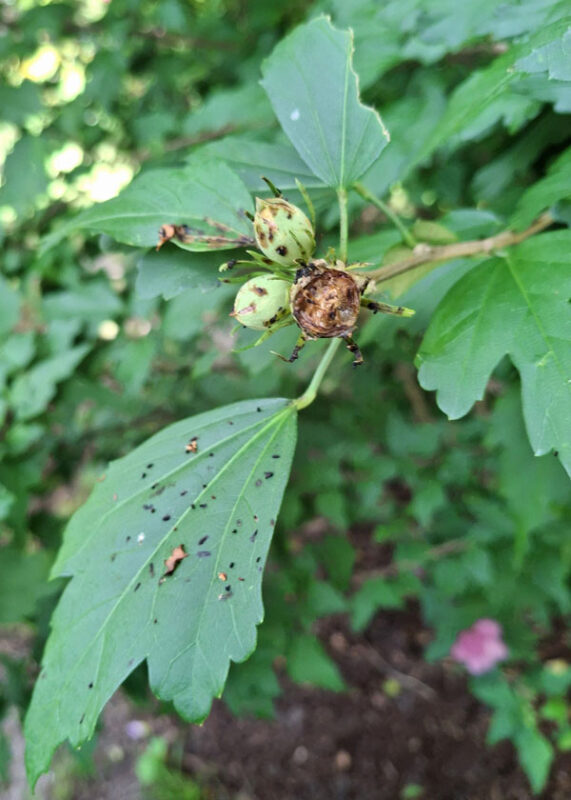
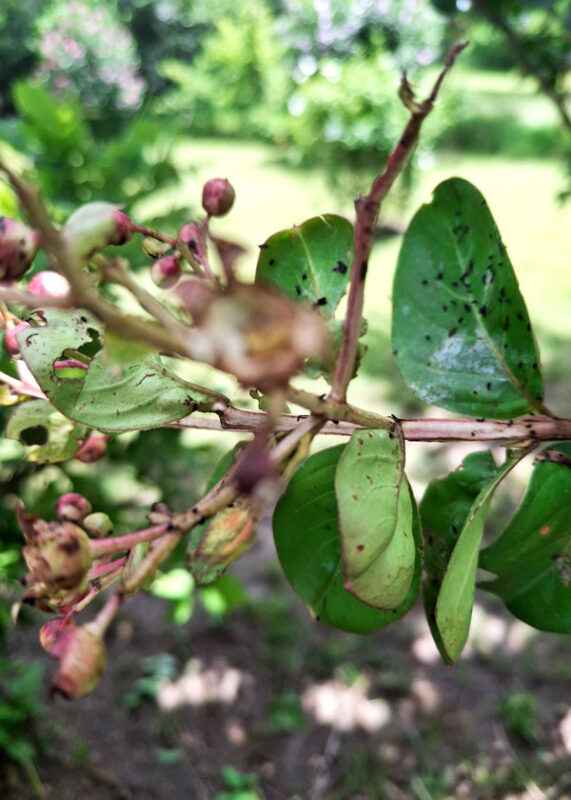
Images clickable for a larger view.
Answer: It appears there might be a couple of things going on. I initially thought the black specks were aphids, but I believe they’re droppings from the insects that have been having their ways with the buds and leaves. That might have been katydids (they love hibiscus relatives like roses-of-Sharon) or some type of caterpillar. That pest could also have chewed the edges of the leaves. I would spray with Spinosad or Bacillus thuringiensis. There is a chance, however, that the pest has pupated and moved on to another phase of its life. You might wash off any remaining frass and see if there is any new feeding. For what it’s worth, althaeas’ flowering season winds down as it turns hot and dry. We’re about there.
I’m less clear on the crape myrtle damage. It’s unusual to see their buds chewed away like that. Again, however, it’s probably a caterpillar of some sort. I don’t think it’s anything common, and I suspect it will be gone from the picture before long. B.t. should eliminate any that are still active. Before I treated, however, I’d examine the plant closely to see if I could find any signs of insects. You might just tidy the plant up with a light pruning, fertilize it, and water it to promote vigorous regrowth so that it can send out another round of buds and blooms. There’s plenty of time left in this growing season.
QUESTION 7
WHAT WILL CONTROL LEAF CUTTER ANTS?
Question: What can I use to control leaf cutter ants that quickly destroy clematis, desert willows, and even crape myrtles? We have sandy soil west of the university. Margie L., College Station.
Answer: I finish with a challenging question. These are some of the most intriguing of all insects. I encourage all to read this short, but very informative write-up about these unusual ants of South Central and East Texas. You won’t believe how specialized their work assignments are. Here is a document put together 10 miles down the road you’re on about your own ant colonies. I think you’ll find it useful. As you read toward the end of it, you’ll see that you’re going to have to protect your plants one at a time. It’s almost impossible to eliminate leaf cutter ants entirely.

